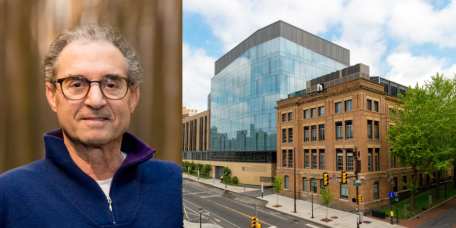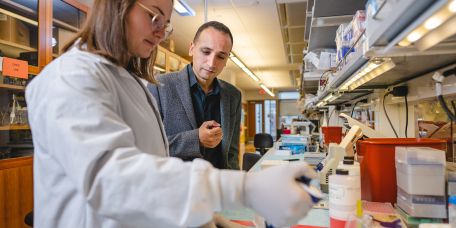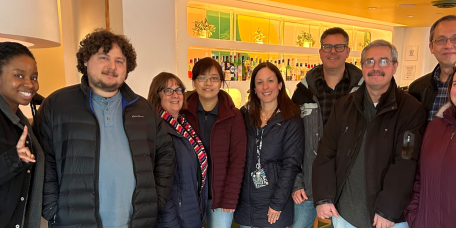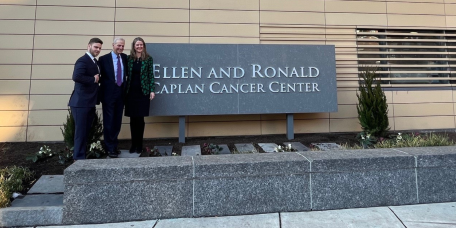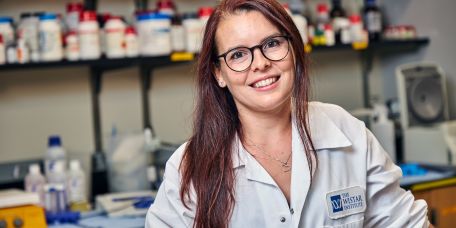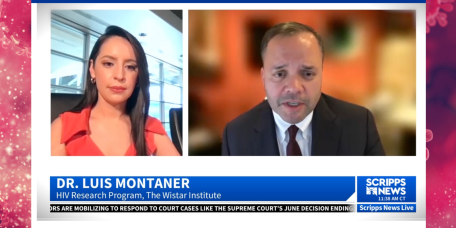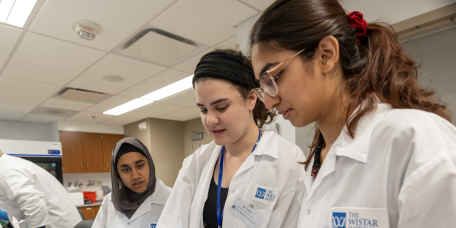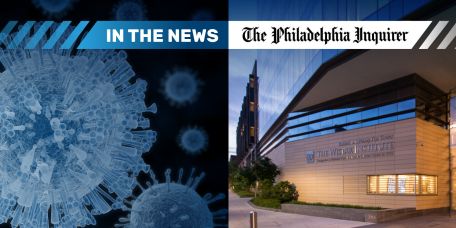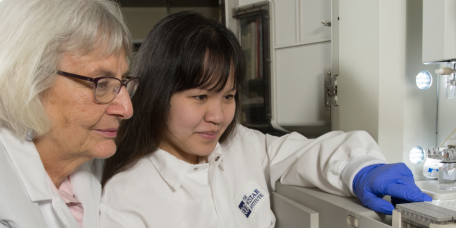The Wistar Institute
The Wistar Institute Appoints Max Berger to its Board of Trustees
PHILADELPHIA — (Feb 27, 2024) — The Wistar Institute, a global leader in biomedical research in cancer, immunology and infectious disease, is pleased to welcome Max Berger to its Board of Trustees. Mr. Berger is currently president of MBA Equi…
Wistar Scientists Discover Link Between Leaky Gut and Accelerated Biological Aging
PHILADELPHIA—(Feb. 21, 2024)—The Wistar Institute’s associate professor Mohamed Abdel-Mohsen, Ph.D., has demonstrated, with his lab and collaborators, a connection between viral damage to the gut and premature biological aging. The group found that…
Wistar has an amazing history of helping people: A conversation with Dr. Wujuan Zhang, Managing Director of Metabolomics and Lipidomics Core Facility
Dr. Wujuan Zhang, shown fourth from left in photo above, recently joined Wistar’s Metabolomics and Lipidomics Core Facility. We spoke to her about her background, her career path, and how she celebrates Lunar New Year. You were previously at Cincinn…
The Wistar Institute’s NCI-Designated Cancer Center Named in Honor of Caplan Family’s Generous Support
A gathering of Wistar employees, donors and senior leaders assembled outside The Wistar Institute on February 13th to unveil a new tribute to a family that has made an indelible impact on The Wistar Institute: Ellen and Ronald Caplan. With Ellen…
The Wistar Institute Announces New Caspar Wistar Fellow, Dr. Irene Bertolini
Wistar scientist joins faculty to pursue research in breast and brain cancers PHILADELPHIA—(Feb. 13, 2024)— The Wistar Institute, an international biomedical research leader in cancer, infectious disease, immunology, and vaccine development, is plea…
Wistar in the TV News: Scripps News story on National Black HIV/AIDS Awareness Day
Shining a spotlight on the need for an HIV cure during National Black HIV/AIDS Awareness Day Wistar HIV researcher Dr. Luis Montaner spoke about his HIV cure research with Scripps News reporter Adi Guajarda for her National Black HIV/AIDS Awareness…
Irene Bertolini, Ph.D.
Caspar Wistar Fellow, Molecular and Cellular Oncogenesis Program, Ellen and Ronald Caplan Cancer Center
Wistar in the News: Technical.ly Philly story on Biomedical Technician Training Program’s Latest Iteration
Philly orgs are partnering with a gene therapy manufacturing company for this new workforce development cohort The Wistar Institute was featured in Technical.ly Philly for news of its “Biomedical Technician Training Program: Lab Technician. This is…
Wistar Institute is opening a new center to research vaccines that could treat and prevent cancer
The Center for Advanced Therapeutics is intended to position Wistar as an appealing research partner for pharmaceutical companies. The Wistar Institute, a National Cancer Institute-designated research center in Philadelphia, plans to open a new… The…
Dr. Louise Showe Reflects on 40 Years at Wistar
Enter Dr. Louise Showe’s office, and you’ll see the evidence of a life lived at the intersection of family and science. A photo taken by her son of a Florida panther hangs on her door. Drawings from her grandkids are tacked prominently above the cre…
